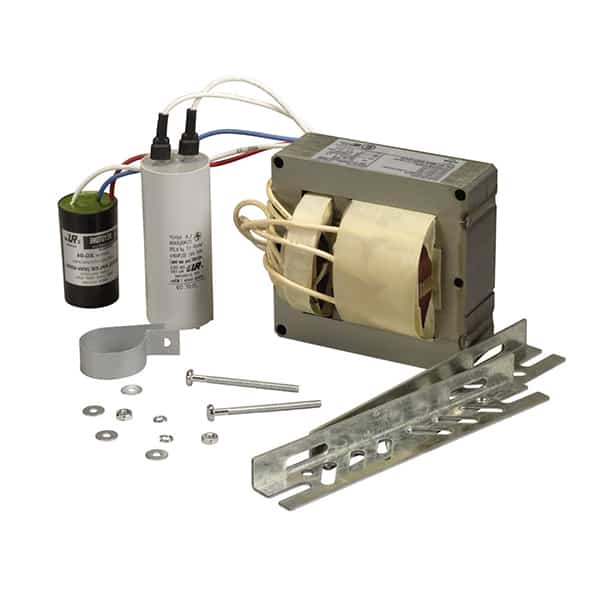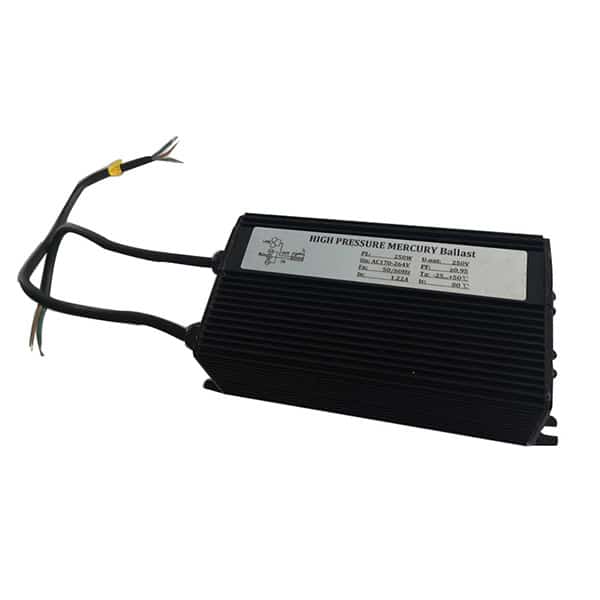When we at James Lighting manufacture our American standard HID ballast kits, we often get inquiries about the types of ballasts we use. The jargon can get confusing – standard ballasts, electronic ballasts, and more. But what’s the difference? And why does it matter?
In the simplest terms, a standard (or magnetic) ballast is a legacy technology that uses an inductor to regulate the current in the lamp, while an electronic ballast uses electronic circuitry for better efficiency and control. While both types serve the same purpose, they differ significantly in their working principles, performance, and energy efficiency.
Excited to delve into this? Let’s explore the intricate differences between standard and electronic ballasts, and why they matter to your lighting solutions.
What is a Standard Ballast and How Does it Work?
A standard ballast, also known as a magnetic ballast, has been the traditional choice for lighting systems for many years. It’s built around a simple coil-based inductor that controls the electrical current passing to the lamp.
Magnetic ballasts operate at the mains frequency (50 or 60 Hz), which can lead to a visible flicker in the light output. While they’re robust and reliable, their energy efficiency and control capabilities are somewhat limited compared to their electronic counterparts.
And What About Electronic Ballasts?
Electronic ballasts represent a more modern approach to controlling lighting systems. Instead of using a coil-based inductor, they employ solid-state electronic circuitry to regulate the lamp’s current.
Electronic ballasts operate at a much higher frequency (often in the range of 20,000 to 50,000 Hz), which eliminates any visible flicker. Besides, they offer better energy efficiency and control capabilities, making them an increasingly popular choice in today’s lighting solutions.
How Do They Differ in Energy Efficiency?
Energy efficiency is a key differentiator between standard and electronic ballasts. While both types perform the same basic function, their methods lead to different levels of efficiency.
Electronic ballasts generally consume less power than their standard counterparts. This is because they operate at high frequencies, reducing the losses in the ballast and improving the lamp’s light output efficiency.
What About the Performance and Control Capabilities?
When it comes to performance and control capabilities, electronic ballasts have a clear edge. They offer a range of features that are not possible with standard ballasts.
Electronic ballasts can control the lamp’s brightness level, adapt to varying input voltages, and even support dimming. These features make them more flexible and adaptable, catering to a broader range of lighting requirements.
Does the Ballast Type Affect the Lamp’s Lifespan?
Yes, it does. The type of ballast you use can significantly affect the lifespan of your lamp. A ballast that provides a stable and efficient supply of current can prolong the lamp’s life.
Electronic ballasts typically result in longer lamp lifespans compared to standard ballasts. They provide a more controlled and efficient current, reducing wear and tear on the lamp and extending its operational life.
How Does James Lighting Factor This into Our Products?
At James Lighting, we continuously strive for the highest quality and performance in our American standard HID ballast kits. We closely consider the type of ballast to use in our products, bearing in mind the various factors we’ve discussed.
We aim to balance the robustness and reliability of standard ballasts with the efficiency and control capabilities of electronic ballasts. This way, we ensure our products deliver exceptional performance, longevity, and value for our customers.
Conclusion: So, Which Ballast Type Should I Choose?
Choosing between a standard and electronic ballast often comes down to the specific requirements of your lighting system. While electronic ballasts offer superior energy efficiency, control, and lamp lifespan, standard ballasts are known for their robustness and reliability.
The key is to understand your needs and choose a ballast that best suits them. And remember, whether you’re looking for standard or electronic ballasts, you can always trust James Lighting to deliver the highest quality solutions.




